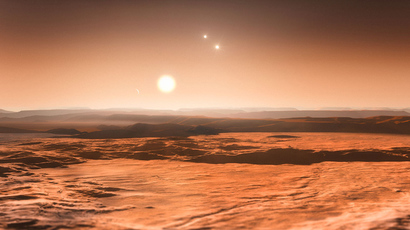NASA starts building faster-than-light warp engine

Researchers at NASA’s Texas-based Johnson Space Center are trying to prove that it is possible to travel faster than the speed of light, and hope to one day build an engine that resembles the fictional Starship Enterprise.
NASA physicist and engineer Dr. Harold G. White, 43, believes it is possible to bend the rules of time and space that Albert Einstein constructed when he postulated that it is impossible to exceed the speed of light.
White's research is based on the theories of Mexican physicist
Miguel Alcubierre, who in 1994 theorized that exceeding
Einstein’s galactic speed limit was possible if scientists
discovered a way to harness the expansion and contraction of
space. And Harold and his team are trying to do just that.

By creating a “warp bubble” that expands space on one side of a spaceship and contracts it on the other, “the spaceship will be pushed away from the Earth and pulled towards a distant star by space-time itself,” Dr. Alcubierre wrote in his hypothesis.
Dr. White is trying to warp the trajectory of a photon to see if he can propel its travel at faster-than-light speeds. His laboratory floats above a system of underground pneumatic piers and was constructed in a way that it would be free from seismic disturbances, since his team’s measuring devices can pick up the smallest vibrations – even those created from people who are walking nearby.
Dr. White told the New York Times that since nature can travel at warp speeds, there is a chance that humans can figure out how to do it too.
“Space has been expanding since the Big Bang 13.7 billion years ago,” Dr. White told the Times. “And we know that when you look at some of the cosmology models, there were early periods of the universe where there was explosive inflation, where two points would’ve went receding away from each other at very rapid speeds.”

Although Dr. White believes the potential construction of a spaceship like the USS Enterprise lies in the distant future, such a project could open doors for far-reaching space travel. Developing a warp drive would allow NASA to drastically reduce travel times to other star systems from tens of thousands of years to weeks or months. With such technology, astronauts could take quick trips to explore other solar systems.
Edwin F. Taylor, a former editor of The American Journal of Physics and senior research scientist at MIT, told the Times that “the idea is crazy for now.”
“[But] check with me in a hundred years,” he added, thereby noting that constructing such a spacecraft might lie in the realm of possibilities.
Richard Obousy, a physicist and president of Icarus Interstellar,
said the idea “is not air-fairy, pie in the sky.”
“We tend to overestimate what we can do on short time scales,
but I think we massively underestimate what we can do on longer
time scales,” he said of Dr. White’s work.
But Dr. Alcubierre, who has never met Dr. White, said that a major hurdle is the fact that a warp bubble “cannot be reached by any signal from within the ship” and can’t be turned on or off in the first place.
Despite the odds, Dr. White and his team are continuing their research, and believe that they can bring warp speed into the realm of the possible.














